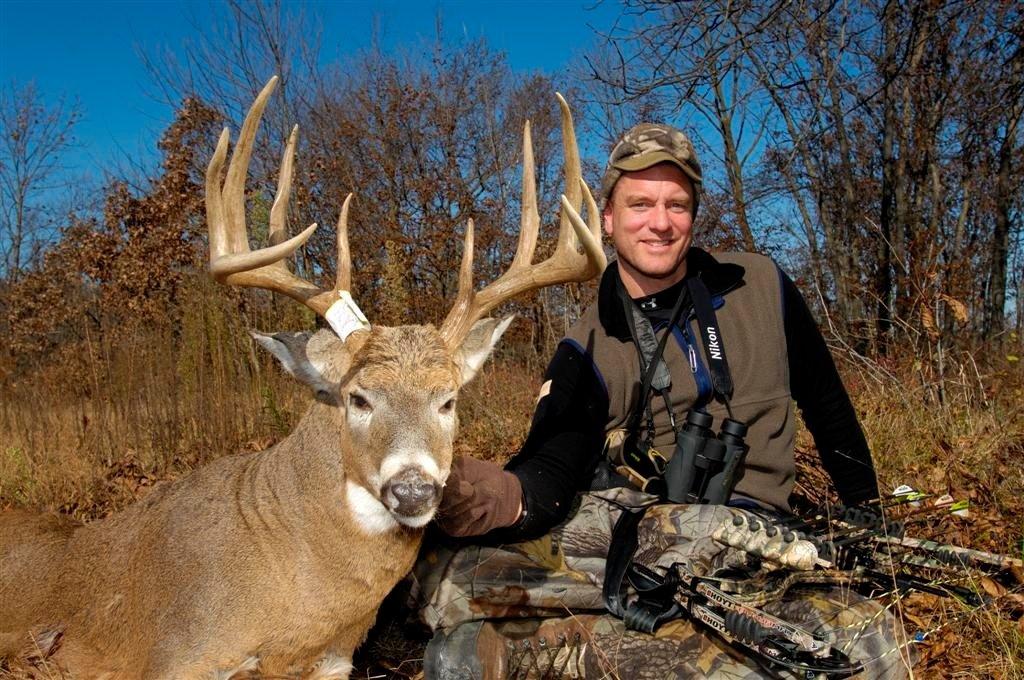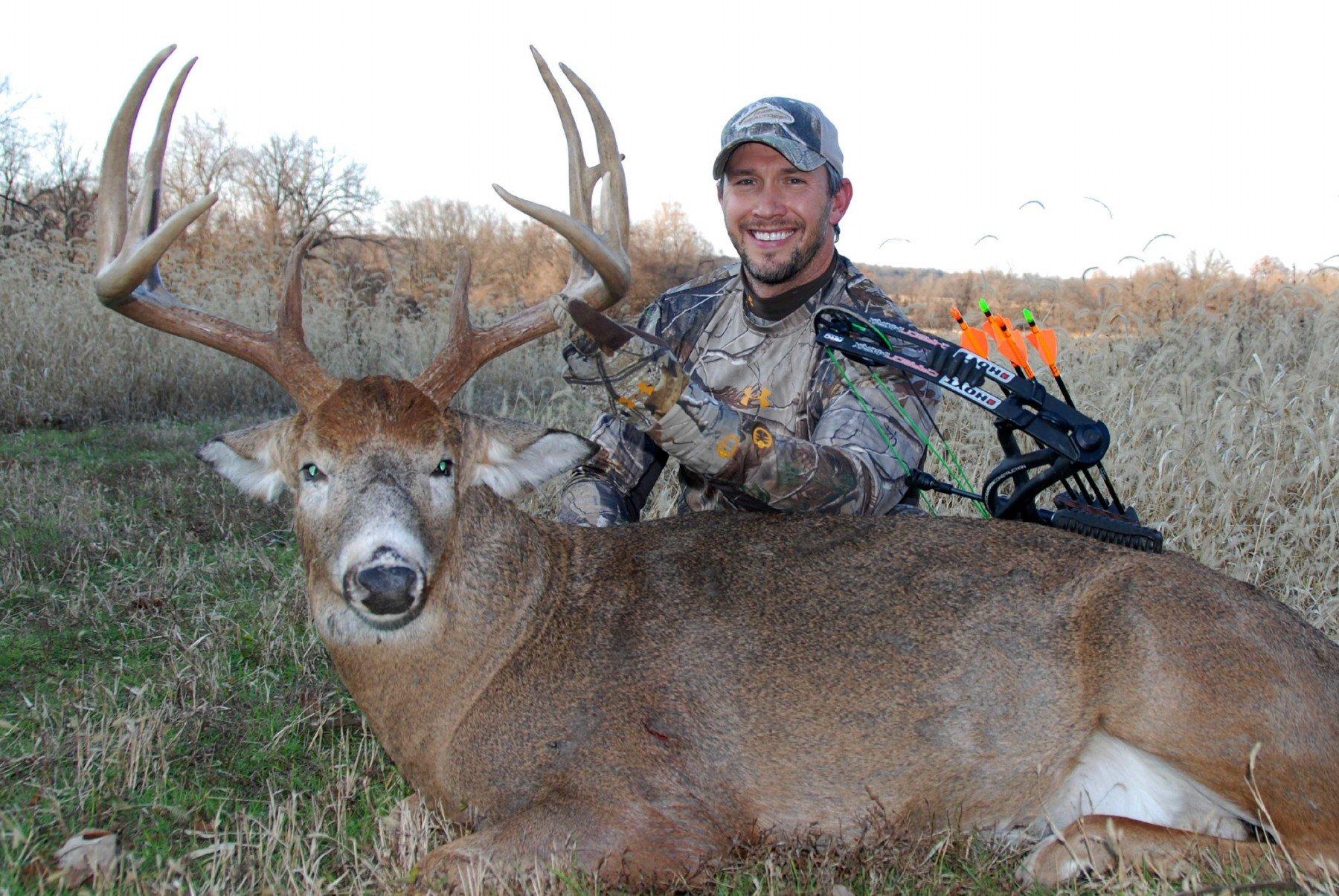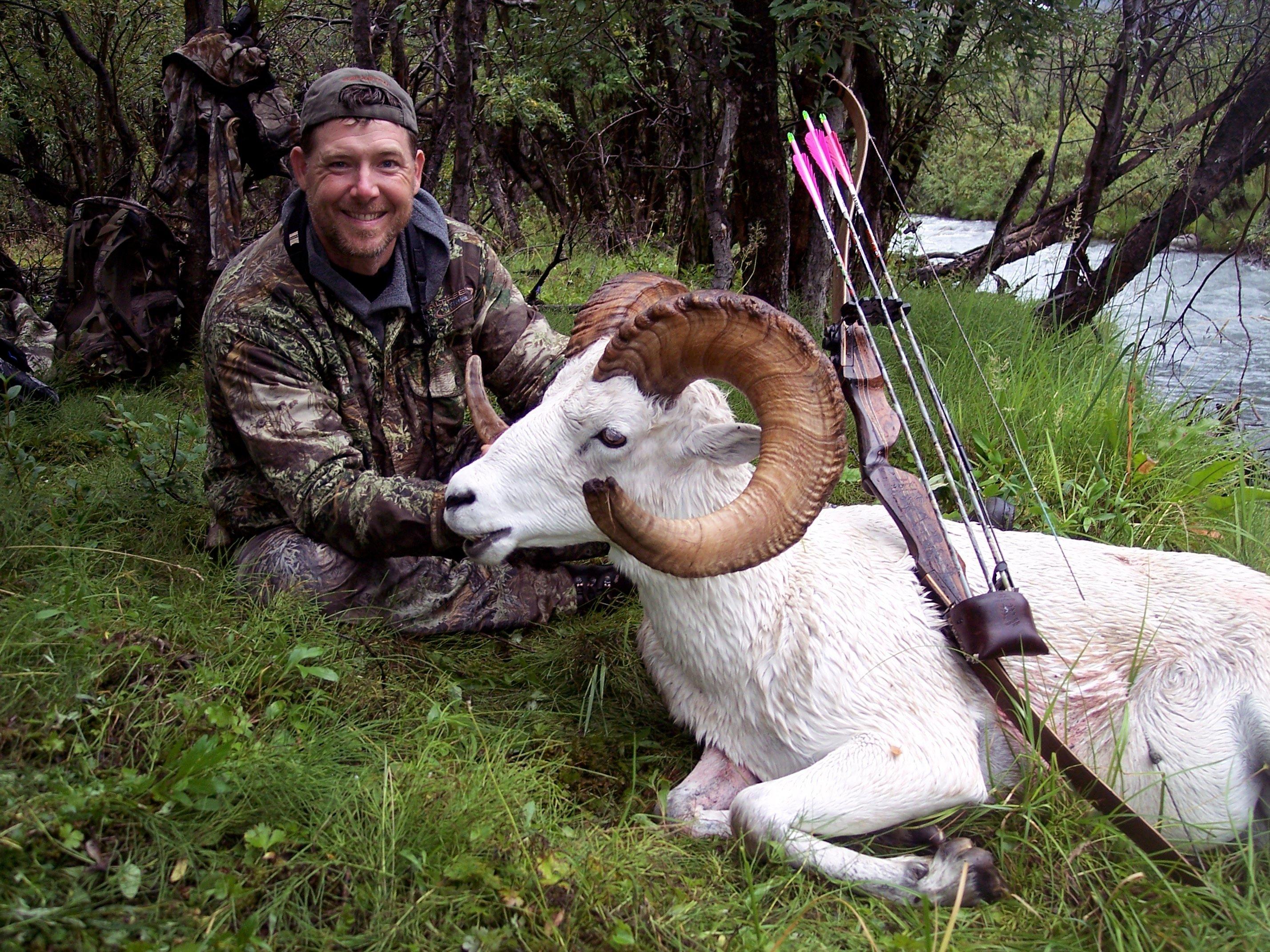Do You Have What It Takes?
Shooting targets with a bow is one thing. Shooting animals is another. Use these shooting tips from hunting professionals to improve your accuracy in the field
If you watch hunting shows or read hunting magazines regularly, you will notice a pattern. The same hunters tag monster bucks and bulls year after year. Yes, the superstars of hunting get more shooting opportunities than the rest of us, but when the moment arrives and they are staring at a big buck, they still have to make the shot.
Outdoorsmen live and breathe big game hunting, and their credibility depends on their ability to make the shot at the moment of truth. They prepare for that moment year-round so when an opportunity arises, it's like taking another shot at a 3D target in the backyard.
 Bill Winke
Bill Winke
Bill Winke is a household name among hardcore bowhunters. He is one of the most widely published outdoor writers in the business. He is also the host of Midwest Whitetail. Winke says hunters need to prepare themselves for that once-in-a-lifetime buck by shooting lots of deer.
- Shoot Does: There is no better way to prepare yourself for the buck of a lifetime than to shoot several animals, Winke explained. There is a big difference between shooting a target and shooting a deer.
- Don't be Too Picky: Winke also suggests hunters begin shooting a few decent bucks instead of focusing all of their efforts on a whopper. Some hunters make the mistake of holding out for giant bucks before they have shots at a few nice bucks, Winke says. As a result, they fall apart when a really big buck walks in front of them. Professional golfers don't win the first time out; they work their way up. Bowhunters should plan to do the same.
- Envision Success: Winke says hunters should imagine themselves making the perfect shot. Professional bowhunters and tournament shooters alike say if you want to be a good shot, you have to have a positive attitude. Imagine making the perfect shot on that trophy buck you've been chasing. If you don't believe you can do it, you won't do it!
Fred Eichler
Fred Eichler, host of Easton Bowhunting TV, knows about high-pressure hunting situations. Eichler has taken every big game animal in North America with traditional archery tackle.
- Shoot Every Day: Bowhunting with a recurve is more work than it is with a compound, Eichler said. More practice is required. To prepare myself, I try to shoot daily. Some days I shoot dozens of arrows. Other days when I am pressed for time, I only shoot one arrow. The important thing is that I shoot as much as possible to keep my muscles tuned and ready to hunt.
- Vary the Distance: Most bowhunters who use a recurve or longbow don't use a rangefinder, so they must learn to be a good judge of distance and be able to shoot at a variety of distances, Eichler says. The only way to do that is to practice at 20, 30, 40, 50 yards and beyond. Traditional shooting is like being a quarterback. When a quarterback throws the ball, he doesn't know the distances to the target, he just launches the ball and it finds his receiver because the quarterback has great eye-hand coordination. A bowhunter shooting a recurve should be able to do the same thing. When I shoot at an animal, I pull up and shoot. I don't use a rangefinder or think much about distance. My eyes and body work together and know what to do. Shooting like that requires extensive practice, but it's worth it.
- Shoot Less Weight: Many bowhunters think they need to pull 60 or 70 pounds to effectively harvest big game animals. I shoot 54 pounds and don't have a problem harvesting animals. It is more important to be accurate, and if you can barely pull your bow back, being accurate is difficult, Eichler explained. Using a super sharp broadhead with 54 pounds has gotten the job done for me. (See footage of Fred hunting mountain caribou with a recurve here).
John Dudley

- Practice Under Pressure: I suggest that any bowhunter who wants to shoot big animals in the field should force themselves to practice in high-pressure situations, Dudley explained. One way to do that is to shoot in local archery leagues during the offseason. There is a big difference between shooting by yourself and shooting while others are staring at you. Even shooting in your back yard with a few friends is better than shooting by yourself. Shooting at a big buck or bull gets the heart pumping and makes hunters sweaty and nervous. Create that feeling by shooting around others.
- Tinker With Gear: Dudley works with several companies in the archery industry, including Doinker Stabilizers and Duravanes. Like many archers, he's a tinkerer. I am always testing new gear and figuring out what works best for me, Dudley noted. All pros use a stabilizer and test many arrow vane and broadhead combinations to find the perfect combo for them. I suggest all bowhunters test a variety of gear before settling on a particular item. Dudley believes using a quality stabilizer is crucial because it helps control the bow in your hand. Today's bows are extremely lightweight. Even the slightest movement can cause the bow to shake, he says. Having a stabilizer out in front of the bow helps steady it, which is why the pros have extremely long stabilizers on their bows. Long stabilizers help keep the bow steady in the hand.
Tim Gillingham

- Practice at Extreme Range: Gillingham believes bowhunters should practice at great distances if they want to make the 30- and 40-yard shots in the woods. I regularly practice at 100 and 120 yards. This helps me perfect my form and my equipment, Gillingham noted. If there is something wrong with my arrow/broadhead combination or my form, I quickly realize it when I am shooting at 100 yards. If my form and arrows are flying well at 100 yards and I am keeping a tight group, a 40-yard-shot in the woods will feel like an easy putt on the green.
- Strive for Consistency: Gillingham has taken several big game animals beyond 50 yards and suggests bowhunters fine-tune their arrows if they are interested in being lethal at longer distances like is often required when hunting out west. Hunters should spin-test every arrow and weigh their broadheads and arrows to make sure they weigh the same. Just because a broadhead package says '100 grains' does not mean that it is. Sometimes they might be off by 10 or more grains. If an arrow is a few grains off and the broadhead is too, it might fly entirely different at 50 or 60 yards than the other arrows in your quiver. I also tell everyone to shoot their broadheads before they hunt. Most broadheads don't fly like field tips. Everything should be shot and tested before entering the woods.
Editor's Note: This Realtree Retro article orginally published in 2010.
Are you a bowhunter wanting to learn how to accomplish your goals? Check out our stories, videos and hard-hitting how-to's on bowhunting.









